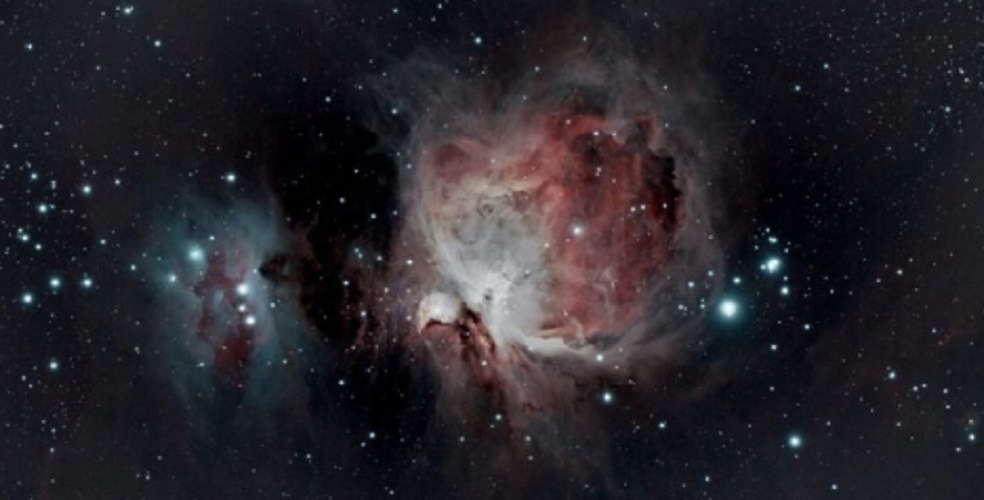What is a nebula?
We explain what a nebula is, what types exist and their characteristics. Also, what is the Orion nebula.
-
What is a nebula?
Nebulae are concentrations of gas and stellar dust that look similar to a cloud , with striking colors. They are important for the universe because the stars form within some of them (as a consequence of condensation and aggregation of matter). In other cases, they only contain traces of extinct stars.
Nebulae can be found anywhere in interstellar space. In our galaxy (the Milky Way), nebulae are found at great distances from Earth , which are measured in light years.
However, it is possible to have detailed images that his majesty is seen, thanks to scientists who operate with complex and sensitive instruments such as the telescope Space Telescope.
-
Type of nebulae
Nebulae have different shapes and sizes, and are divided into four types:
- The reflection nebulae. They are those that reflect the light of nearby stars (stars that do not emit enough radiation). They have colors in bluish tones due to the way light is scattered by dust particles in the nebula. For example, the nebula “Pleiades” (or also called “seven sisters”).
- The emission nebulae. They are the most common, those that emit their own light due to the alteration of the hydrogen atoms that receive the ultraviolet radiation from the stars. For example, the “Omega” nebula.
- The absorption nebulae. Also called “dark nebulae”, they are not directly visible. They are those that do not emit light and hide the stars they contain. The first astronomer to discover this type of nebulae was the German William Herschel. For example, the “horse head” nebula.
- The planetary nebulae. They are those that emit the light of the stars they contain, after they expel their outermost layers of gas (their last stage of life). This type of nebula is shaped like a ring or bubble. For example, the “Helix” nebula.
-
Nebulae Characteristics
The nebulae are composed of gas (hydrogen and helium predominate) and dust . They reach a diameter of hundreds of light years in length. They are formed with the explosion of supernovae , that is, they are the consequence of the last stage of life of the stars.
When a star has no more fuel to burn (gases), its nucleus begins to collapse under its own weight and that generates an abrupt expulsion of the outer layer that expands into space, which results in varied and striking forms: the nebulae
For example, the destiny of the Sun is to become a “planetary” nebula and end its days as a “white dwarf”. Within about five billion years, the Sun will deplete its hydrogen reserve and become a giant red star, which will expand beyond Earth’s orbit .
Hundreds of millions of years later, half of its mass will emanate into outer space, so it will be seen (from distant star systems) as a large planetary nebula, where the Solar System used to exist .
Another very significant and interesting feature is that some of the nebulae can give rise to stars and planetary systems . The stars are formed from the gas and dust found in some nebulae, such as “pillars of creation” and “eagle nebula.”
There, gas and dust accumulate due to their own gravitational effect (that is, the nebulae perform a process in which they shrink). Fragmentation of matter occurs in smaller groups and each of them can be heated to start a nuclear reaction that becomes a new star.
The rest of the matter that fails to become a star is part of the material that will give rise to a planet or other objects in the Solar System.
In addition to the nebulae, there are groups of ancient stars (of the oldest in the universe) called “globular clusters”, which orbit around the galactic nucleus (the center of rotation of our galaxy).
These clusters are attracted to each other by the force of gravity, so they form spherical regions. Hence the origin of its name, from the Latin globulus which means “small sphere.” That is why we can find stars or groups of stars among the nebulae or in different spaces of the galaxies.
-
Orion Nebula

The Orion Nebula, also known as Messier 42 or M42, is one of the brightest and can be seen in the night sky (although it is about a thousand four hundred light years from Earth). It was discovered by the Frenchman Nicholas Peiresc in 1610 .
It is located south of the Orion belt and is made up of hundreds of newborn stars and a group of young stars, called Trapeze, which are approximately two million years old.
Its appearance has varied colors : reddish (consequence of the radiation of the electromagnetic emission of hydrogen), bluish with violet dyes (consequence of the reflection of the spectral type stars that are in the center of the nebula) and greenish (consequence of the transition of electrons over oxygen atoms).




